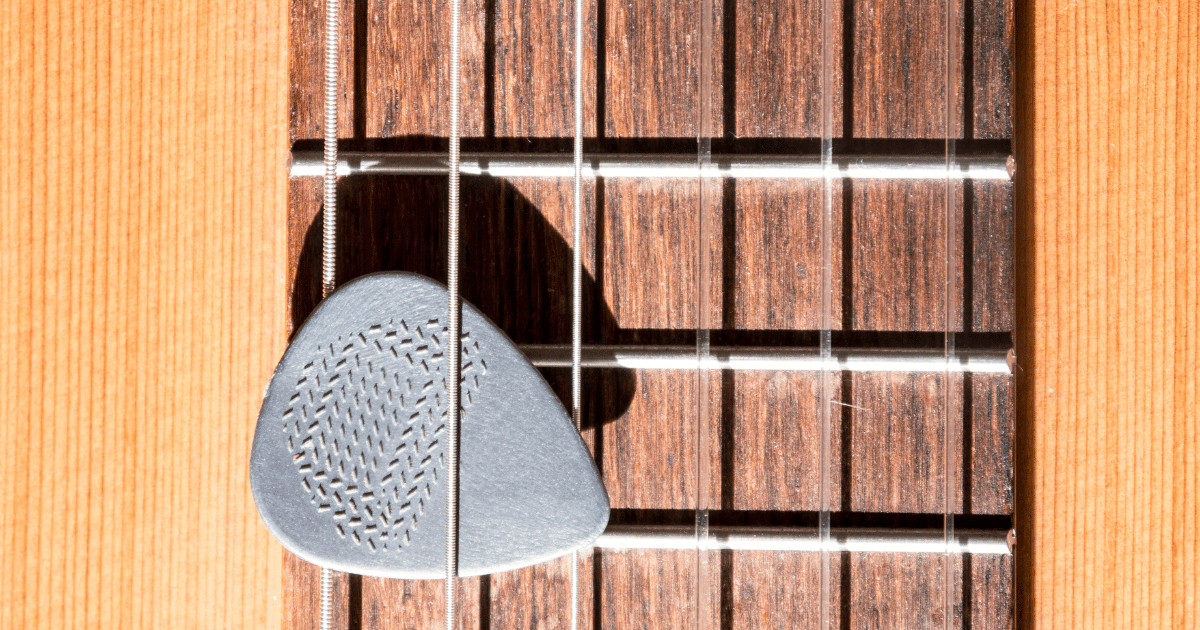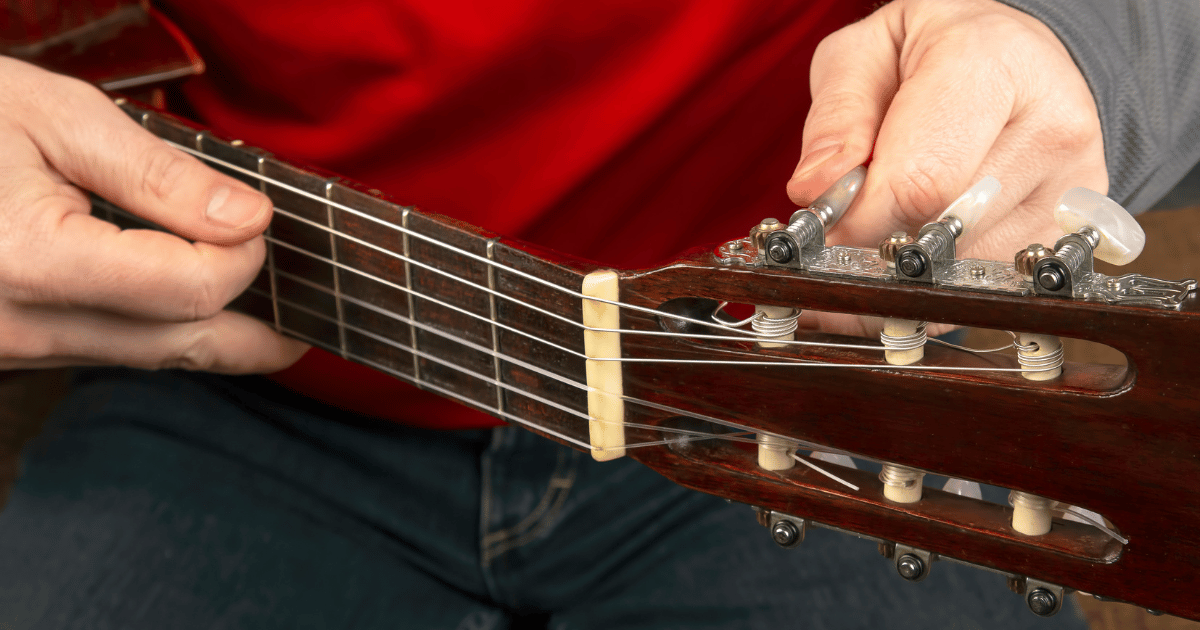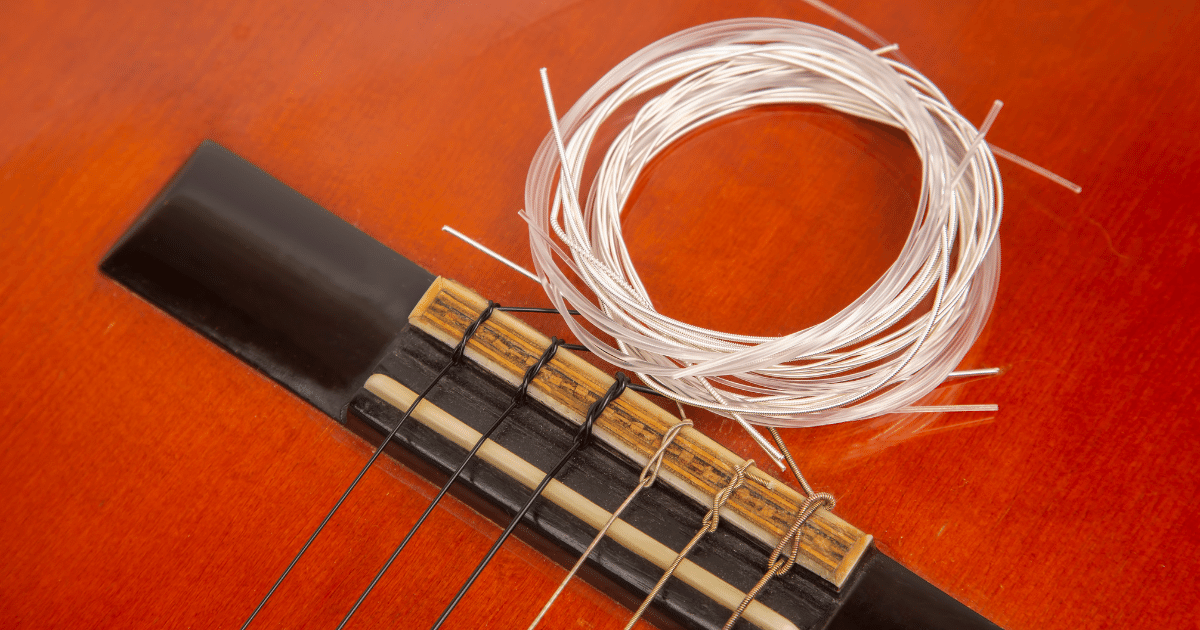
As an avid steel-string acoustic guitar player, I always experiment with different strings to shape my tone and sound.
On a whim, I decided to install nylon strings on my trusty Martin to give it a warmer, mellow feel. I had read about some artists swapping steel for nylon, so I figured – why not give it a shot?
In this blog post, I’ll share my first-hand experience of trying nylon guitar strings on my steel string and outline the potential problems I faced.
I’ll also offer some tips if you still want to give nylon strings a go on your steel acoustic. Let’s dive in!
Can you put nylon strings on a steel string?
Yes, You can install nylon strings on a steel-string acoustic guitar, but compatibility issues often arise from the differing construction and tension profiles.
Nylon strings may need better tuning stability, fret buzz, and rapid wear when used on steel-string guitars not designed for lower tension.
For best results, utilize a classical/nylon-string guitar suited for softer nylon strings’ gauge and tension requirements. With caution, you can experiment with nylons on inexpensive steel-string guitars, but effects on tone and playability may be mixed based on hardware and structural factors.
Why I Put Nylon Strings on My Steel Acoustic?
I decided to try nylon guitar strings to emulate the soft, mellow tone I hear in many Latin-style guitar music. Artists like Jose Gonzalez and Rodrigo y Gabriela use nylon string guitars to amazing effect. I also love the nylon string sound in Paul Simon, Radiohead, and Metallica Records!
I figured I could get close to that smooth classical guitar tone on my trusty Martin. I’d likely discover some interesting new acoustic sounds by experimenting. Curiosity got the better of me!
Edmonton’s friendly guitar teacher is ready to help. Schedule your lesson!
My Experience Using Nylon Strings
After installing nylon strings with ball ends, my steel string did take on a nicer mellow tone at first. The attack was smooth, and the bass relaxed. I loved the rounded response and did enjoy noodling some warmer fingerstyle tones.
However, the nylons, especially the lighter gauges, couldn’t hold their tuning. I also got an annoying fret buzz past the 12th fret, likely due to the lower tension versus my bronze acoustic strings. Strumming produced little volume or dynamics. And my favorite picks shredded through the softer nylon strings quickly.

Nylon vs. Steel Strings – Key Differences
Before I discuss my problems, it helps to understand a few key differences between nylon and steel acoustic guitar strings. Here’s a quick comparison:
Construction and Materials
- Steel strings: Made of metal alloys like bronze, nickel, and phosphor bronze. The exact ratio of metals affects the tone and sound.
- Nylon strings: Made of softer nylon polymer materials and occasionally other modern composites
Tone and Sound Profile
- Brightness: Steel strings have more crispness and glimmer in the treble tones. Nylons sound darker and mellow.
- Attack: Steel strings have a crisp, defined attack, while nylons have a smoother, rounded response.
- Sustain: Steel sustains much longer. Nylon has less sustain and a quicker decay.
Tension and Playability
- Steel strings are tightly wound under significantly higher tension on the guitar neck.
- Nylon strings have lower tension, made for classical guitars with lighter bracing.
So, steel and nylon strings feel and respond very differently when played. Guitar necks/bodies are designed to handle one tension profile over the other. Mixing string types can cause issues!
Problems Using Nylon Strings on a Steel Acoustic
Based on my firsthand experience, here are the main problems I ran into with nylon strings on my steel-string acoustic guitar:
Tuning Stability
This was the dealbreaker for me. The nylon strings constantly went out of tune after just a few minutes of playing. The ball ends held tight in the bridge, but the strings couldn’t retain pitch. Nylon seems very susceptible to factors like temperature and humidity. No fun having to tune after every chord change!
Neck and Body Issues
- Uneven tension – Mixing some nylon and some steel strings led to uneven tension on the neck. More tension can allow fretting buzzes and dead notes.
- Warped neck – Over time, the lower nylon tension can compromise the truss rod and allow the neck to warp with the high steel string tension. Bad news!
- Weaker body construction – Unlike classical guitars with lighter wood, most steel string acoustics have thicker wooden tops and heavier bracing to handle the additional string tension.

